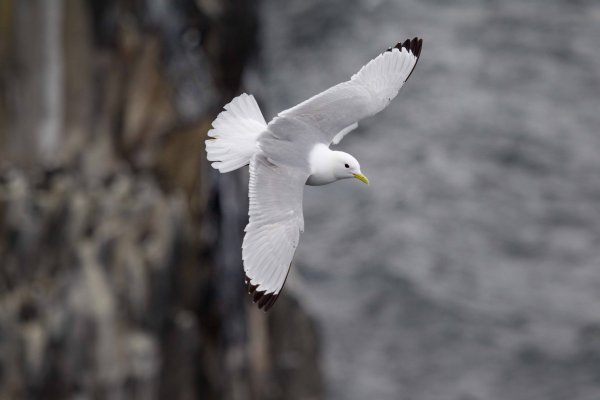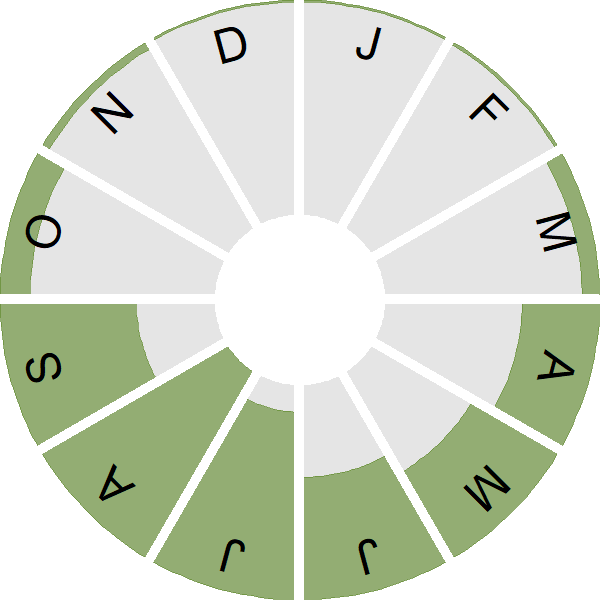Manx Shearwater
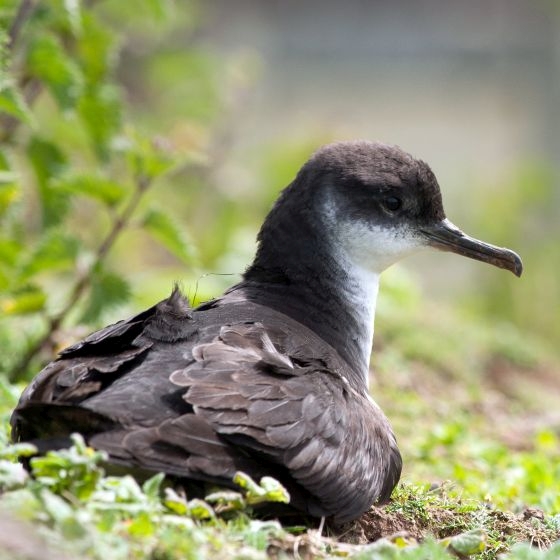
Introduction
This medium-sized sooty black and white seabird is a skilful navigator of the open ocean, but rarely seen on land.
Manx shearwaters are long-lived birds that typically glide on stiff wings low over the sea surface. They are nocturnal at their breeding colonies, which are often located in steep and inaccessible terrain at a few dozen localities, mostly located on our western seaboard.
Outside of the breeding season, these migratory birds winter in the South Atlantic, predominantly off Brazil and Argentina.

Key Stats
Identification
Songs and Calls
Call:
Status and Trends
Conservation Status
Population Change
Most of the world population of this species breeds in the UK or Republic of Ireland. The first full survey was carried out during the 1998–2002 Census (Seabird 2000). Recent surveys of the main colonies in the UK suggest that the UK population has increased substantially since Seabird 2000, possibly by as much as 50% (JNCC 2022).
Distribution
Manx Shearwaters breed in roughly 50 colonies, these tending to be located on steep grassy slopes on offshore islands, mainly along the western coastlines of both Britain and Ireland. However, they are wide-ranging during the summer with foraging individuals seen throughout the coastlines of Britain and Ireland.
Occupied 10-km squares in UK
or view it on Bird Atlas Mapstore.
or view it on Bird Atlas Mapstore.
Distribution Change
Change in occupied 10-km squares in the UK
or view it on Bird Atlas Mapstore.
or view it on Bird Atlas Mapstore.
Seasonality
Manx Shearwater is a breeding season visitor, arriving in late winter/early spring and then widely reported in early autumn as birds depart for the southern hemisphere.
Weekly pattern of occurrence
The graph shows when the species is present in the UK, with taller bars indicating a higher likelihood of encountering the species in appropriate regions and habitats.

Movement
Britain & Ireland movement
Foreign locations of birds ringed or recovered in Britain & Ireland
Dots show the foreign destinations of birds ringed in Britain & Ireland, and the origins of birds ringed overseas that were subsequently recaptured, resighted or found dead in Britain & Ireland. Dot colours indicate the time of year that the species was present at the location.
- Winter (Nov-Feb)
- Spring (Mar-Apr)
- Summer (May-Jul)
- Autumn (Aug-Oct)

European movements
EuroBirdPortal uses birdwatcher's records, such as those logged in BirdTrack to map the flows of birds as they arrive and depart Europe. See maps for this species here.
The Eurasian-African Migration Atlas shows movements of individual birds ringed or recovered in Europe. See maps for this species here.
Biology
Productivity and Nesting
Nesting timing
Egg measurements
Clutch Size
Survival and Longevity
Survival is shown as the proportion of birds surviving from one year to the next and is derived from bird ringing data. It can also be used to estimate how long birds typically live.
View number ringed each year in the Online Ringing Report.
lifespan
Survival of adults
Survival of juveniles
Biometrics
Wing length and body weights are from live birds (source).
Wing length
Body weight
Ring Size
Classification, names and codes
Classification and Codes
- Order: Procellariiformes
- Family: Procellariidae
- Scientific name: Puffinus puffinus
- Authority: Brünnich, 1764
- BTO 2-letter code: MX
- BTO 5-letter code: MANSH
- Euring code number: 460
Alternate species names
- Catalan: baldriga pufí
- Czech: burnák severní
- Danish: Almindelig Skråpe
- Dutch: Noordse Pijlstormvogel
- Estonian: põhja-tormilind
- Finnish: pikkuliitäjä
- French: Puffin des Anglais
- Gaelic: Fachach-bàn
- German: Atlantiksturmtaucher
- Hungarian: atlanti vészmadár
- Icelandic: Skrofa
- Irish: Cánóg Dhubh
- Italian: Berta minore atlantica
- Latvian: melnknabja vetrasputns
- Lithuanian: atlantine audronaša
- Norwegian: Havlire
- Polish: burzyk pólnocny
- Portuguese: pardela-sombria / fura-bucho-do-atlântico
- Slovak: víchrovník malý
- Slovenian: atlantski viharnik
- Spanish: Pardela pichoneta
- Swedish: mindre lira
- Welsh: Aderyn Drycin Manaw
Research
Causes of Change and Solutions
Causes of change
The long-term trend of Manx Sherwater is unclear due to the absence of Census data prior to 2000. The introduction of rats is believed to have caused the extermination of some colonies, although some colonies have continued to survive despite the presence of rats at low abundance (Lambert et al. 2015). Data suggest that the Manx Shearwater has recently prospered on islands where it continues to be present. The reasons for the recent apparent success of the species is unclear, particularly as these increases (should they be confirmed when the results of Seabirds Count 2015–2021 are available) are occurring at a time when other seabird species appear to be suffering declines which have been attributed to recent reductions in fisheries discards (Bicknell et al. 2013).
Publications (5)
The status of the UK’s breeding seabirds
Author: Stanbury, A.J., Burns, F., Aebischer, N.J., Baker, H., Balmer, D., Brown, A.F., Dunn, T., Lindley, P., Murphy, M., Noble, D.G., Owens, R. & Quinn, L.
Published: 2024
Five seabird species are added to the Birds of Conservation Concern Red List in this addendum to the 2021 update, bringing the total number of Red-listed seabird species to 10, up from six since seabirds were last assessed. The Amber List of seabirds moves from 19 to 14 species, and the Green List increases from one to two species.
29.09.24
Papers
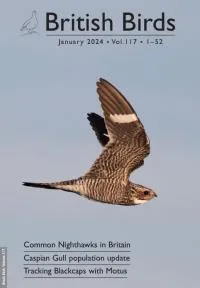
Seabird Population Trends and Causes of Change: 1986–2023
Author: Harris, S.J., Baker, H., Balmer, D.E., Bolton, M., Burton, N.H.K., Caulfield, E., Clarke, J.A.E., Dunn, T.E., Evans, T.J., Hereward, H.R.F., Humphreys, E.M., Money, S. and O’Hanlon, N.J.
Published: 2024
This report presents the latest seabird population trends in breeding abundance and productivity using data from the Seabird Monitoring Programme (SMP).The report documents changes in the abundance and productivity of breeding seabird species in Britain and Ireland from 1986 to 2023, and provides a detailed account of the 2021, 2022 and 2023 breeding seasons.This report includes both inland and coastal populations and trends from the Channel Islands, England, Isle of Man, Northern Ireland, Scotland, Wales and the Republic of Ireland, which are presented where sufficient data are available. The results from this report are used more broadly to assess the health of the wider environment, to inform policy and for conservation action.
21.11.24
Reports Research reports
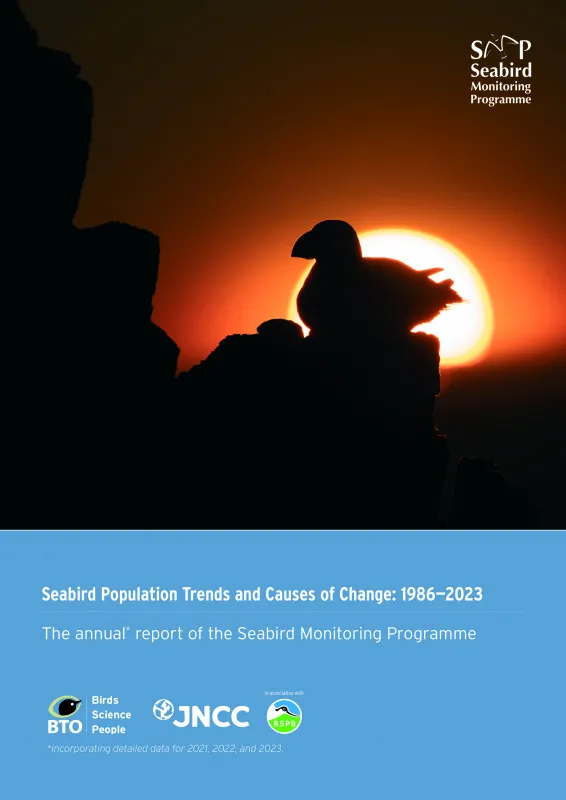
Northern Ireland Seabird Report 2023
Author: Booth, K.J. & El Haddad, H.
Published: 2024
The report includes detailed information about the population trends and breeding success of seabirds in Northern Ireland, over the 2023 breeding season. Notably, Fulmar and Kittiwake populations are reported to be experiencing continued declines, while Guillemot, Common Gull and Herring Gull populations show increases at most breeding sites.
15.04.24
Reports Northern Ireland Seabird Report

Birds of Conservation Concern Wales 4: the population status of birds in Wales
Author: Johnstone, I.G., Hughes, J., Balmer, D.E., Brenchley, A., Facey, R.J., Lindley, P.J., Noble, D.G. & Taylor, R.C.
Published: 2022
The latest review of the conservation status of birds in Wales. The report assessed all 220 bird species which regularly occur in Wales. There are now 60 species of bird on the Red List, with 91 on the Amber List and just 69 - less than a third of the total number of species - on the Green List.
06.12.22
Reports Birds of Conservation Concern

Seabird foraging ranges as a preliminary tool for identifying candidate Marine Protected Areas
Author: Thaxter, C.B., Lascelles, B., Sugar, K., Cook, A.S.C.P., Roos, S., Bolton, M., Langston, R.H.W. & Burton, N.H.K.
Published: 2012
The UK government is committed to establishing an ecologically coherent network of Marine Protected Areas (MPAs) to manage and conserve marine ecosystems. Seabirds are vital to such ecosystems, but until now these species have received little protection at sea. This is partly because there is scant information available on the oceanic regions they use at the different stages of their lifecycle. A new study led by the BTO, in partnership with the RSPB and Birdlife International, has sought to address this by bringing together work on how far UK-breeding seabirds travel from their colonies (typically in search of food for themselves or their chicks) during the breeding season.
01.01.12
Papers
